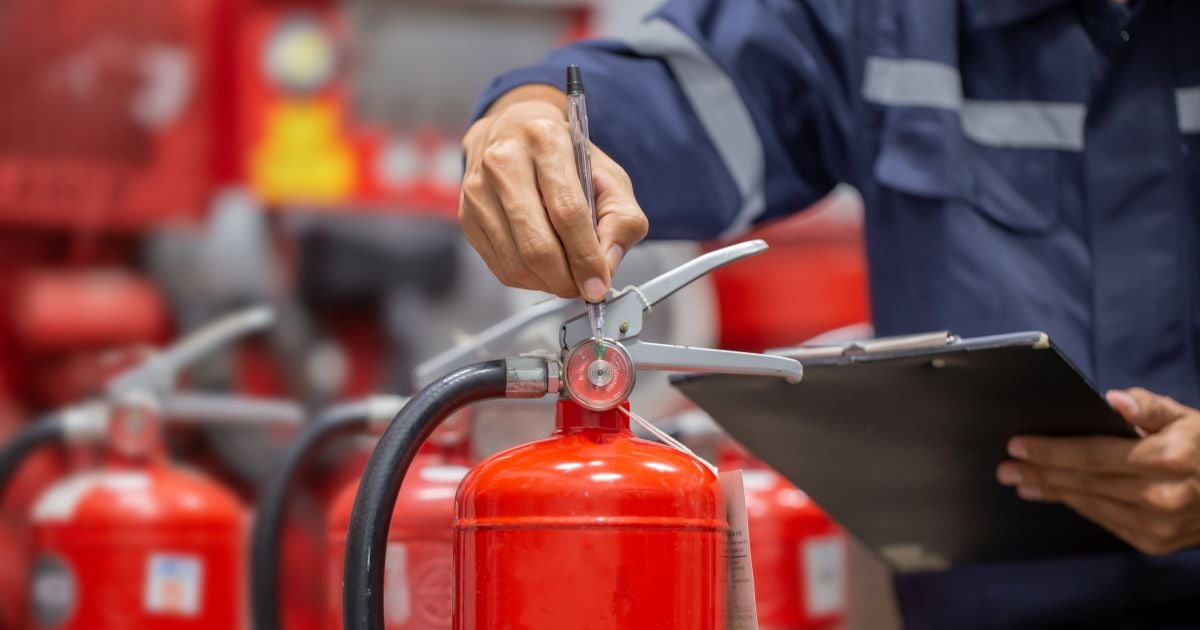The protection of fire is essential for any Sydney business. It’s not only an obligation under the law, but it’s also a method of keeping your employees, customers and assets safe. Fires can cost a lot within a matter of minutes. But with adequate safety measures put in place, many of these dangers can be prevented or reduced. The combination of inspections of fires, electrical systems testing and tagging, and complying with CFSP rules can all help to create the safety of workers and assure that the business is in compliance with the Building Code of Australia and local standards of the council.
The importance of fire inspections to ensure safety
Inspections for fires are the initial protection against potential hazards. Inspections ensure that each element of a structure’s fire protection system is functional and current. In Sydney the business must conduct inspections every six months or annually, depending on building type and local council regulations. The inspections usually cover everything including fire alarm panels and sprinkler systems to smoke alarms, fire hydrants, extinguishers, as well as emergency lighting.

Inspections are important since they can reveal issues that are not obvious and before they turn into a danger. A small fault on a fire hydrant or an obstruction in a smoke detector might appear minor at first but, in an emergency, such flaws can cause death. By carrying out regular fire inspections, business owners are not only meeting compliance obligations but also taking active steps to safeguard their premises from unexpected disasters.
Test and Tag Examine Hidden Electric Risks
Electrical systems are one of the leading cause of workplace fires, which is why testing and tagging should always be an integral part of a fire safety program. This includes checking electrical devices to make sure they are reliable, safe, and secure. After that a tag that is visible put on the device to show it has passed inspection. This is a legal requirement that’s not always an easy one. In many businesses it’s an effective way of avoiding the possibility of a risk.
Incorrectly checked, worn-out or outdated cables, appliances with faults or outdated wiring could rapidly become dangers to fire. Through conducting regular tests and marking, businesses decrease the risk of electrical malfunctions leading to a fire outbreak. It also builds trust and confidence for employees by assuring them that their workplace is safe. Combined with fire inspections and testing, this extensive security plan minimizes risks from a variety of angles.
The Role of CFSP in ensuring compliance and Certification
Only a Competent Fire Safety Professional (CFSP) who is based in New South Wales, can confirm and sign crucial fire safety documents like Annual Fire Safety Statements. The introduction of CFSP accreditation raises the standard of fire safety and ensures that only qualified professionals assess and verify safety measures. The use of the CFSP assures that reports and inspections are not just paper work, but reliable evaluations by experts.
The role of a CFSP extends far beyond ticking boxes. These professionals assess the performance and condition of fire safety systems and provide detailed reports. They also ensure compliance with regulatory requirements. Without CFSP certification, companies risk penalties, legal issues, or even shut downs if security measures for fire are judged to be insufficient. Working with professionals who are certified will ensure that the fire safety systems are maintained correct and that all requirements to be in compliance are met.
Fire Safety is a Constant Involvement
The issue of fire safety is not a one-time obligation but it is a continuous responsibility for each business owner. Regular inspections and testing of electrical equipment, together with a proper certification from CFSP and CFSP, create a security cycle that never ends. Beyond the legal requirements and promoting a workplace culture of safety. Employees are more comfortable when they know that evacuation plans, smoke alarms, emergency lighting and a fire suppression systems are in place.
When you consider fire safety an ongoing process, not just a box to check each year businesses are able to reduce risk and improve their standing. Customers and clients are more confident when they are in a place that is a safe and secure environment. In the long term investing in proactive fire protection can save money by preventing costly damage as well as fines and legal disputes, while protecting the lives of all who walks into the building.
Conclusion
Fire safety in Sydney requires a multi-layered strategy that includes fire inspections as well as testing and tagging, and certified by an CFSP. Each component is vital to ensure that businesses are in compliance with the rules, and most important, that property and people are secured. When safety is an integral aspect of the business rather than an added-on consideration, businesses can don’t just fulfill their legal obligations, they also provide a safer and durable environment for the next.